Jamie Jean Schneider DommDigital Strategist, Social Media + Big Data, North American Division Justin KhoeDigital Missionary, "I’m Listening with Justin Khoe; Life. Faith. And the things that matter." Before subscribing to your channel, most people visit your channel page to get a bird’s-eye-view of what to expect. It is the number-one place where people will decide to subscribe to your channel and, therefore, requires careful thought. It’s important to understand visitor behavior on the platform. Often, people will watch and like a video that has come up in their suggested videos. Then they click on the name of the creator, which directs them to the channel page. What they find will influence whether they decide to subscribe to the channel to receive that content in their regular feed of videos. Many times, they’re looking for a few specific things, such as: How many videos has this creator uploaded? (after all, what’s the point of subscribing to a channel with only two videos?); how often do they upload? (once a week, twice a week?); what types of videos are they offering? They may also check out your most popular videos. Spend time organizing your channel page to help answer these questions and create a brand look that appeals to the target audience you are trying to reach. Work with a professional designer, if necessary. To start, consider your channel name and how it can tie into your ministry’s branding and goals for being on the platform. Refer to the previous section of this guide on branding to help you identify which direction you would like to go. The name “That Christian Vlogger” immediately communicates to the viewer that they can expect video blogs of Christian content, making the value of the channel instantly apparent. The more common route is to choose the name of a personality or organization. However, this may make it more difficult to communicate purpose and value. Ask, “Does this channel name make a person want to subscribe to the channel?” When an individual uses his or her name, it implies that the channel contains content that is more personal and relatable to the viewer. Be careful to avoid names that only have internal meaning and don’t convey a clear message or value to the broader public. This is especially important for evangelistic channels seeking to reach people outside the faith who may not be familiar with Christian terms. People may misinterpret your content as not being for them. Next, develop strong copy for your YouTube channel’s “About” page. The first sentences are the most important, as this copy will pop up in the hovercard for your channel in several places around YouTube, such as the comment and suggested channels sections, as well as the snippet text in the YouTube search results. Therefore, it’s very important that you are intentional with how you craft this copy. These first few sentences should call out your target audience, helping the reader identify that this content is for them. Also, pitch the value of your channel for that target audience. Ask yourself, “Why should they prioritize my content over another similar channel?” or “How will they be affected by my content?” Assume that the reader has never heard about you before and has no idea what your channel is about. Then take the next paragraph to describe what your channel is about and what a person can expect if they were to subscribe to your channel, including your posting schedule. Additionally, weave keywords that are relevant to your channel into the copy and the content you’re creating. Avoid just listing keywords at the end of your “About” page. Finally, you can include links at the bottom of the “About” page that direct to your website and other social media profiles. The channel trailer is a video that is shown very prominently at the top of your channel page for prospective new audience members. Once they hit “subscribe,” they will no longer see that video. Therefore, create a short channel trailer that speaks directly new people, letting them know what your channel is about or what your goal is, how often they can expect new content (e.g., daily, weekly, monthly), and what kind of content they can expect on a regular basis (e.g., vlogs, comedy, inspirational, etc.). Your channel trailer should feature you addressing the camera directly. If possible, give them visual demonstrations of what your channel will show them with quick clips (i.e., your b-roll) while you speak. These elements combined help create an engaging trailer that sets clear expectations, enabling the viewer to better decide if this channel is for them. The channel header is found at the very top of your channel and is an opportunity for you to set your brand apart from other channels. Branding helps communicate a greater perceived value. Make sure your branded look is professional, clean, and modern. Include your upload schedule in your header, and use graphics and text to communicate what the channel is about. Consider including a close-up of your face (if you are the “face” of your ministry) that enables the viewer to see the whites of your eyes on a small screen. Be sure to also include relevant social media links to your ministry’s other platforms. Consider which videos you want people to see first. One strategy is to highlight your most popular videos in a playlist. By featuring your highest-viewed videos, people are more likely to give them a chance because a significant number of other people have already watched them, indicating they are worth your time. This is called social proofing. Another strategy is to feature your highest-converting videos. These can be identified by looking at your channel analytics to see which videos convert viewers into subscribers the most often. Your most-viewed videos may not effectively convert viewers to subscribers. Spend time organizing your videos into additional playlists based on related topics, choosing your best-performing videos for each topic. This can help create a string of binge-worthy content, increasing the time people spend watching and engaging with your content. You may even want to create a playlist dedicated to new subscribers titled something like “New Here?” or “New to the Channel?” This will allow a newcomer to get to know you and your channel through a curated playlist of videos designed to introduce them to your personality and content. Humans connect better with other humans and stories, so share some of your back story here. Checklist for next steps
Jamie Jean Schneider DommDigital Strategist, Social Media + Big Data, North American Division Justin KhoeDigital Missionary, "I’m Listening with Justin Khoe; Life. Faith. And the things that matter."  While it is true that content is king, it is also true that marketing is queen. On YouTube, the things that most influence your discovery and channel growth (other than quality of content) are your thumbnails, titles, and tags. Each video that you create should have one focal point or one problem that you’re trying to address. Your thumbnails, title, description, and tags should all work in unison to communicate that message and to optimize the exposure of every piece of content you produce. YouTube’s algorithm weighs all the elements of your video—views, length, titles, tags, etc.—to determine whether to promote that particular video in related search queries, suggested videos, and on the homepage. Most people will find your video through a search query or a related video, so it’s important to have a solid strategy to increase your exposure. Therefore, knowing how to optimize your thumbnails, title, and tags is essential to growing an audience. Best practices for each element
If you’ve already established a library of content on YouTube, go back and optimize each of these elements. This will cause YouTube to reevaluate each of your videos and their ranking, helping to better position your existing content. These four elements combined help increase the authority of your channel content, but don’t expect immediate results or for your first video to go viral. YouTube also assesses the quantity of content your channel has produced and gives more authority (and better rankings) to channels that have more content because there is more for people to watch. Expect to put in significant amounts of time to create a wealth of content using these best practices. To be successful on YouTube, you need two pieces. First, you need valuable content that answers people’s questions, meets their needs, makes a difference in people’s lives, and is optimized with proper thumbnails, titles, descriptions, and tags. Second, you need consistency when it comes to putting content out on the platform. Do this, and you will see results. Jamie Jean Schneider DommDigital Strategist, Social Media + Big Data, North American Division Justin KhoeDigital Missionary, "I’m Listening with Justin Khoe; Life. Faith. And the things that matter." Your channel or content strategy is simply the direction you plan to take with your videos to help achieve your goals. The easiest way to determine a channel strategy is to ask yourself a few questions about your audience. What are they interested in? What kinds of questions do they have? What types of problems can you help them solve? Instead of guessing at the answers to these questions, spend time with these people, and ask them these questions! Refer to the “Understanding Your Target Audience” and the “Content Strategy” section of this guidebook to help you through this process. Once you determine who your target audience is, ask, “Why should they care about my content?” Develop an overall value proposition for your channel based on the needs or core values of your target audience. The value proposition answers two questions: “What do you offer?” and, “Why does it matter?” What value can you deliver to your target audience through your videos? Once you can answer this question, clearly promote your value in each of your videos. Each video should have the underlying objective of moving you toward your strategic goal. Then develop a content creation strategy that balances engaging your current audience with attracting new viewers through highly searchable and sharable content. If your channel is new or small, plan to gear around 75% of your content toward expanding your audience base. Once you get established with tens of thousands of subscribers, switch the balance to favor fan-centric, community content to keep your audience engaged. There are essentially four types of content:
Establish a secondary value in all your videos based on the perceived relationship your audience can develop with you. Many people will watch your videos and engage because they feel connected to you. The on-camera personality should seek to strategically integrate the relational aspect of your channel into the videos to foster a sense of community. People want to feel like they are getting to know you, trust you, that you’re credible, and that they would enjoy spending time with you in person. People are drawn to authenticity and can relate more easily when you demonstrate your humanity and vulnerability. Your content strategy should ultimately serve to support your ministry’s goals for being on the platform. Refer to the section on “Developing a Strong Foundation” to determine what those goals are and possible key performance indicators. Next Step Identify five other YouTube channels that create the type of content that you are looking to create and start watching their content. Consider this activity market and competitor research. Jamie Jean Schneider Domm Digital Strategist, Social Media + Big Data, North American Division Justin Khoe Digital Missionary, "I’m Listening with Justin Khoe; Life. Faith. And the things that matter." Contrary to popular belief, running and starting a ministry’s YouTube channel doesn’t have to break the bank. It is a myth that you must have a six-figure budget to succeed. With the advent of social media, the bar for acceptable picture and video quality has been lowered. Every one of us is used to the notion of watching hours of content per week that was shot on a cell phone. However, with all the options of lenses, cameras, and sound equipment vying for your attention, it can be incredibly overwhelming when trying to figure out what is actually needed to get started. Rest assured, even with limited knowhow and a moderate budget, you can create great content. While it can be easy to be distracted by the shiniest and newest camera or microphone on the block, never forget that content is king. Higher-quality equipment can be helpful, but it is not always necessary, especially when you are first getting started. Beware of contracting GAS (Gear Acquirement Syndrome). When I (Justin Khoe) started my channel, I was working with an almost non-existent budget, and I paid for everything out of pocket. Eventually, valuable content will always beat out expensive equipment. The most important thing is to get started. Below is the recommended equipment for three different budget levels: a low, medium, and high budget. The prices below represent approximate costs as of 2020. Prices may change dramatically due to 2020 economic challenges. Note: If you are working with a church, you might already have audio equipment or lighting available to borrow.
Next Steps Determine your budget. Choose the camera, lights, and microphone. Start creating! Jamie Jean Schneider DommDigital Strategist, Social Media + Big Data, North American Division Justin KhoeDigital Missionary, "I’m Listening with Justin Khoe; Life. Faith. And the things that matter." One major question that you should ask yourself about any piece of content uploaded to social media is, “Why would anyone care to watch or listen?” While uploading your full worship service will certainly be a blessing to your current church body, think about each online viewer as a first-time guest.
Before a prospective viewer can get to the actual message, many ministries force them to sit through 20−30 minutes of content that is irrelevant to them. Why should someone who has never been to your church care about the announcements, special music, or offertory? Instead of uploading your program’s entire livestream to YouTube, a better approach would be to optimize your content for this specific platform once the live event is over. Realize that YouTube is a search engine; it’s a social community with its own subculture and set of social norms. Upload just the individual sermons or messages from your evangelistic series or camp meetings, and optimize the videos to be found via search. Break your livestreams and longer videos into smaller segments for distribution and community engagement on YouTube and other social media platforms such as Facebook and IGTV. Consider breaking your videos into two- to three-minute, easy-to-watch clips that highlight the key points of an inspiring message, or pull out the children’s stories into their own dedicated playlist. Your goal should be to create as much evergreen content as possible to promote your message, church, or ministry to seekers. Capturing the attention of your audience several different times can help build trust and value regarding your ministry. Evergreen content can be shown to new audiences repeatedly while retaining its intrinsic value, meaning it doesn’t become less interesting or less relevant over time. Be sure to avoid including the date in the title of your video or mentioning it in graphics or dialogue during the selected message. Perception is important in outreach. The more dated your content seems, the less relevant it will appear, even if it still carries tremendous value. Questions to consider before uploading your videos:
Follow the guidelines outlined in the How to Start A YouTube Ministry: A Comprehensive Guide. These guidelines will help position your video in the best possible way, not only to be found, but also get watched. Be sure to follow these steps because your content cannot lead people to Christ unless it is viewed. Jamie Jean Schneider DommDigital Strategist, Social Media + Big Data, North American Division Justin KhoeDigital Missionary, "I’m Listening with Justin Khoe; Life. Faith. And the things that matter." The way to bring natural traffic to your channel is to position your video so the people looking for it can find it. This process is called SEO (search engine optimization), and the same basic steps can be used for any digital platform. YouTube is most often used as a search engine. Find content, write content, and curate content related to top YouTube searches. Frame your posts to pique curiosity and answer people’s questions, addressing their deepest longings. You can get top search data from any search engine, YouTube, and other social media trend tracking sites. Try it. Start typing in a question, and let the search engine auto-finish. The top results represent the most popular search queries. In other words, you will see what large numbers of people are searching for online. It gives you a sneak peek into their needs, worries, nagging questions, and often hidden yearnings. This is how you listen.
Recommended steps
Once this is done, create your video, and follow the guidelines outlined in the How to Start A YouTube Ministry: A Comprehensive Guide. This will help position your video in the best possible way, not only to be found, but also get watched. Be sure to follow these steps because your content cannot lead people to Christ unless it is viewed. Jamie Jean Schneider DommDigital Strategist, Social Media + Big Data, North American Division Justin KhoeDigital Missionary, "I’m Listening with Justin Khoe; Life. Faith. And the things that matter." INTRODUCTIONPeople come to YouTube for entertainment and education. It’s not an exaggeration to say that video is king! Internet video traffic accounts for 80% of all consumer Internet traffic. YouTube is the second-largest search engine and the second most-visited website in the world. This is where young people spend most of their time online. Creating a YouTube account is very cheap. All you need is a camera and a device to upload from. YouTube is great for communicating ideas quickly and provides a storage place where your content never dies. It can be revisited or reposted as many times as you want. In this free guide, we’ll take you through a step-by-step process for starting a YouTube channel from scratch. We strongly encourage you to take the time to go through this guide completely and review the resources before starting your YouTube channel. Or, if you already have a channel, use this guide to evaluate where changes need to be made. If you’re not yet convinced that your ministry should consider creating a YouTube channel, review the following statistics. YouTube Statistics (May 2020)
If you have the calling to reach young people, YouTube is a must. This 63-page guide will help you determine relevant topics for your target audience and position your videos to maximize reach and watch time. Click the button below to download this free guide. Justin KhoeDigital Missionary, That Christian Vlogger. How I grew my Channel from 0 - 65,000 followers Let’s assume that you’re convinced about digital missions. In fact, let’s say that you’re ready to start a YouTube channel for your ministry, church, or as an individual! The question is, how do you grow an audience? Great content needs to be seen to impact the lives of your intended audience. Let me walk you through five key steps. Step #1 - Commit to an upload schedule.Perhaps the most important thing to realize is that growing an audience takes time. Over the last three years I have created over 350 videos. Some of those videos have been seen by tens if not hundreds of thousands of viewers, while some have fallen flat with just a few hundred. The main reason why you want to commit to an upload schedule is because you learn so much more when you create so much more. Many people expect to release one perfect video and create an audience from that one video. Now, while I do not doubt the power of a viral video, you can never really create a deep and meaningful community off of one video. When I first started my YouTube channel, I made a promise to myself that I would upload one video per week without fail (it turns out that I actually uploaded 100 videos that year). I am a firm believer that done is better than perfect. So many people get paralysis by analysis simply because they want to create the perfect piece of content. News flash: your first videos will suck. That’s ok. Everyone’s first videos are terrible. The point isn’t that you create perfect content, but that you perfect the art of creating better content. With each video, you should improve on the one before. For the purposes of YouTube, I suggest a minimum of one upload per week. If you have the additional bandwidth and skills to do more, that's great, but not necessary. One video per week will suffice. Step #2 - Do your homework.Now that you have committed to creating 52 videos in this upcoming year, the next question you should ask yourself is, what kind of content should you create? This is a key question for your ministry, and I go in-depth on this topic in the “How to Start a Video Ministry” course. The TL;DR version is this. Find questions that people are searching for on the internet and create content specifically designed to answer those questions. Utilize tools like VidIQ or Google keywords and the YouTube search engine to know what popular questions people are asking. Ideally, you want to find the sweet spot between super competitive searches and questions that no one is asking. If you target phrases that are too competitive, your voice will be crowded out and your videos will fall short. Conversely, if you target niche questions with near to zero search traffic, you may eliminate your potential viewers while eliminating potential competition. One helpful exercise that I did when I first started was a broad search on YouTube of some of the more commonly watched videos in the Christian niche and I created a spreadsheet of what people seemed to respond to most. To start, I suggest targeting questions or phrases that have on average 10,000-100,000 monthly searches on Google. Any more than 100,000 monthly views and competition is too fierce. Any less than 10,000 and you’re very likely to not garner attention at all. Step #3 - Study analytics.Once you have created an initial library of content (say, a dozen or so videos), it’s time to start studying your numbers and learning from your analytics. You can learn quite a bit of information from the numbers that YouTube provides. Pro-tip: Some important metrics to take notice of are total views, minutes watched, and viewer retention. The first two are pretty straight forward. Total number of views and minutes watched per video are obvious indications of what type of content is resonating with your growing audience. If you notice clear trends on which type of content is getting attention, dive deeper into that subject and create more content around it. For example, if your video on “How to Study the Bible” has noticeably higher engagement over any other type of content, consider creating content around a related topic. Examples could include, “Which Bible translation is best?” “Where should I start when studying the Bible?” and “5 Bible Verses to Help with Stress.” The goal with creating families of content is to allow a potential viewer to binge watch three to four videos at a time. If you only have one video on an important subject, they can’t do this. Viewer retention is arguably the most overlooked metric for most YouTube content creators. The longer you can keep someone on YouTube, the more favorably you will be treated by the YouTube algorithm. The simple fact of the matter is that not everyone watches the entirety of your video. Consider the “Average percentage viewed” metric. A healthy benchmark to shoot for is above 50 percent. You’ll notice in the picture that at no point are there significant drops in viewer retention. This is a healthy sign that the video you created was valuable to your audience and has done a reasonable job in addressing the question. If you ever see sharp declines in audience retention, this is a great time for you to pull a lesson from it. Consider this picture: You can see a sharp drop from 100 percent to about 60 percent retention within the first 60 seconds of this video. Perhaps my audience was not interested in the subject, maybe I did a poor job of introducing the content in an engaging way, or, most likely out of all the explanations: I took too long to get to the content. Studying your viewer retention can help you change your approach and delivery of your content. Step #4 - Engage in community.It is absolutely crucial that you do not look at your YouTube channel as a one-way street. Too often we view the YouTube platform as a digital portfolio of our content. This is a misguided approach that will limit your potential for meaningful impact. You should regularly be asking your audience questions, encouraging them to share their thoughts in the comments, and intentionally trying to build relationships off platform. A rule of thumb: every single piece of content that you create should invite conversation. The most obvious application of this is to actually ask your audience a question in each video. Encourage them to share what stood out to them, challenge what you presented, to both agree or disagree with you and to let you know why. Appropriate discourse and debate are hallmarks to a healthy online community. Trolls: Create enough content and you will inevitably encounter trolls. Internet trolls are people who start quarrels or aim to upset people on the internet with the exact purpose of distracting and sowing discord by posting inflammatory and digressive, extraneous, or off-topic messages in an online community. The goal for the troll is to amuse themselves by provoking viewers to display emotional responses and by leading the community down rabbit holes. There are a few ways you can handle internet trolls. All have merits and drawbacks.
For more guidance on assessing your response, download a helpful infographic. Step #5 - Take risks.I am a firm believer that you should constantly be reinventing yourself. There is a major difference between 10 years of experience and one year of experience repeated 10 times. Experiment with different styles of content, different approaches, and even subjects that challenge both you and the audience. One series of videos that I continually take risks are on the issue of the LGBT community. I have done eight total videos on the subject of homosexuality in the Church. Each time I have invited an openly gay Christian friend as a guest to the channel. The videos were not centered around debate, but around empathy. My hope was to humanize the “other side” so that we could talk to each other instead of past each other. As you can imagine, there was a significant cost to this series. In total, I have lost over 700 hard earned subscribers from this series of videos. If you look on the graph below, you can clearly see when these videos were initially released. However, while I had lost a major number of subscribers in the short term, I still believe that this was a healthy choice overall. The type of channel that I’m creating is one where controversial topics can be discussed. I, personally, am hoping to create a space where people can wrestle with their faith and ask the difficult questions that churches often avoid.
My audience may not always end up agreeing with my particular stance on any number of topics, but they know that I will always treat the subject and my guests with grace, compassion, and love. This posture of humility and of an open heart invites a very particular type of viewer and has created a heavily engaged community willing to journey through life together with me. Related blogs: Justin KhoeDigital Missionary, That Christian Vlogger. When it comes to reaching millennials, social media is a necessity, not a luxury. With only 2 in 10 millennials considering regular church attendance important, it just makes sense to meet young people where they are, and in 2018, that’s online. Millennials spend on average 18+ hours per day behind a screen consuming movies, podcasts, social media, and playing video games. If you think that’s crazy, consider this: when I shared this statistic at Andrew’s University, over 50% of the seminarians I asked said that this was an accurate representation of their day. As a church, our first response has been to point out the inherent dangers in online media, and rightfully so. However, if we have any desire to reach the unchurched or those who have left the faith, running away from social media is no longer an option. As Eleanor Roosevelt famously said, “It’s better to light a candle than to curse the darkness.” Rather than running away from social media, I believe God is calling us to run toward it, not as mindless consumers and gullible sheep, but as digital missionaries. The digital missionary recognizes that “…Everyone who calls on the name of the Lord will be saved” (Romans 10:13, NIV). But as Paul said, “How then will they call on him in whom they have not believed? And how are they to believe in him of whom they have never heard? And how are they to hear without someone preaching? And how are they to preach unless they are sent?” (Romans 10:14-15, ESV). The digital missionary is a faithful Christian who is committed to taking the gospel to the world, whether that means selling books door-to-door, hopping on a plane to a third-world country, sharing their testimony on Sabbath afternoon, or creating videos on YouTube. So here are 5 of the most important tips that I’ve learned in my three years as a digital missionary: Tip 1: Assume no one will ever come to your church. When most begin thinking about digital evangelism, one of the first questions is, “How do we get them to come to church?” Respectfully, I think this is the wrong question to ask. After all, the mission given to us by Jesus was to make disciples, not to grow our local church. Stop treating Facebook or Instagram simply as advertising platforms for weekend services or midweek socials. Instead, ask yourself this: If the only teaching or discipling that my viewer receives comes from my online ministry, how would their walk with God look? Would their love for Jesus be increased? Would they be challenged? Would their faith grow? By taking the “disinterested benevolence” approach, always serving and never expecting, God will place us directly in the path of those who need it most. Sometimes that means our ministry will reach the shut-ins and disabled, the persecuted Christian living in a Muslim country (true story), or someone like Brook. Paradoxically, by making this assumption, people do show up at church. In fact, this past month Helen dragged her husband and all four of her kids to church when she found out that I would be speaking at a local Adventist church only 2.5 hours away. She may not be baptized yet, but as someone who has been convinced of the seventh-day Sabbath, Helen is doing the hard work of wrestling through these difficult questions. Thankfully, she doesn’t have to do this on her own. Tip 2: Numbers matter, but not in the way that you think. As a digital missionary it’s easy to believe two lies when it comes to “numbers.” On the one hand it’s easy to get proud when a video “goes viral” and the subscribers start rolling in. Conversely, it’s easy to get discouraged and think it’s not worth the effort when only a dozen people watch a video that took you five or six hours to create. In the same way that God values the small local church of a dozen members and the mega church with tens or hundreds of thousands of members equally, the same is true for the online video. It doesn’t matter if your video gets millions of views or dozens; God values it the same. After all, what matters to God most is the impact on the individual. It can be so easy to forget this simple fact, leading us to start interpreting views as a simple metric instead of what it really represents: actual real-life human beings who have taken the time to watch your content. No Bible worker would for a moment feel ashamed when only a dozen people showed up to their Bible study. No pastor would ever consider the many hours in sermon prep a waste if he only got to preach to 50 or 100 people. The same should be true for digital missionaries. Why? Because each view isn’t actually a view. It’s a person Tip 3: Teach what your viewers are looking for, not what you’re interested in. One of the most overlooked facts about YouTube is that it is the second largest search engine in the world. In fact, every month, YouTube sees over 3 billion searches! “How-to” videos are growing 70% each year. We know this intuitively. After all, what do we do when we need to learn how to change a tire? We YouTube it! Need to learn how to tie a tie? YouTube it! Trying to learn how to install a piece of software on our computer…YouTube it! The same is true for spiritual questions. Over 100,000 people every single month are searching for answers to questions like, “Is God Real?” “What happens after death?” “What is Faith?” and even…“What is a Seventh Day Adventist?” Instead of uploading an hour-long debate on who the King of the North is from Daniel 11, try targeting what people are actively searching for. Here’s a pro-tip on how to discover what people are looking for online. Open up YouTube on an “incognito tab” on Chrome (if you don’t know how to do this, ask a 13-year-old in your church). By doing this, you won’t allow your personal search history to influence the auto-complete in the search bar. Start typing phrases like, “What does the Bible…” “Does God…” and “Why does God?” Pay close attention to what shows up. YouTube is telling you that these are the most commonly typed questions by YouTube viewers from all across the world! This is where you should start when creating online content. P.S. Use free tools like VID IQ, Google Ad Words, or Tube Buddy to get more in-depth information on specific questions many people are searching for. Tip 4: Remember, community matters most! Most of your viewers will be casual viewers: those who watch one or two videos only to wander to some other part of the internet. Don’t be discouraged by this. Jesus mentioned that there would be different soils each time we try to plant seed. Don’t be easily discouraged when it seems like your audience is highly transient in nature. If you are consistent in creating quality content, never “grow weary of doing good.” The promise is that, “in due season we will reap, if we do not give up” (Galatians 6:9, ESV). Building deep community takes time. This is true of digital missions and IRL (in real life) ministry. People may visit your church dozens of times before they truly engage with the community and get involved through service. When I first started my online ministry, I asked myself how I would define “success” if I were planting a church. After 12 months, would an engaged community of 50 people be success? 100? 1000? Apply this same long-term mentality to building an online community. Don’t get impatient. Other than creating consistent, quality content, there are many more things that you can do to build community. Respond to every single comment. Yes, all of them. Every comment is an opportunity to build community. Think of every comment as a real interaction (because that’s what it is). How would you respond if someone had something complimentary or critical to say to you after church? What would you do when a visitor had a question to ask the pastoral team? Respond to every single comment. Even the haters. Some of the most meaningful interactions that I have had online actually have come from people who were initially, “haters.” When fellow YouTuber, “The Raging Atheist,” made a very colorfully worded and angry video focused on attacking my channel (http://bit.ly/2NVbTrU - sensitive ears beware), instead of getting defensive, I tried to reach out. Two more VERY colorful videos and several months later, “The Raging Atheist” not only considers me a friend but is actively encouraging his atheist subscribers to go and subscribe to my channel. To hear the full story, check out the Restore podcast by Javier Diaz. Make it a practice to reach out to your viewers. Connect with them on other social media platforms like Facebook, Instagram, and Twitter. Ask them questions. Offer to video chat or call them when they have questions. Respond to every email as if they were a person knocking on your church door, and over time you will build a deep and meaningful community. Tip 5: Prayer is not enough. Educate yourself and collaborate with others. Don’t get me wrong. Prayer is not only important, it is necessary. Any success that we will have in ministry, digital or otherwise comes as a direct response to prayer. But a digital missionary must combine it with an active effort to be informed and competent. Social media platforms change about as often as Apple releases new iPhones. As such, it’s important to continually invest in education and mentorship. I’m writing this case study having just gotten back from Las Vegas. No, I wasn’t trying to make it big at the casinos. Instead, I had just invested three days with some of the industry’s leading experts on social media marketing. Side note: many of the most proficient experts in social media are fellow believers seizing the power of social media for kingdom growth! Over the last three years, I have spent over $10,000 on online courses, coaching, books, conferences, and mentorship. Now, I realize that not everyone is in the position to invest this type of money, but there are so many free resources available to help equip you with the knowledge and tools you need to succeed as a digital missionary (thanks to the NAD for partnering with me to create a FREE course on how to start a video ministry. Perhaps one of the most beautiful things about digital missions is that social media actually rewards collaboration instead of competition. Whether you are looking to launch a YouTube channel, podcast, blog, or Instagram account, there is much to be gained from partnering with like-mission-minded people. Connect with other digital missionaries. Learn from their experiences, both the successes and failures. Seek to bolster and support their efforts with the heart of a servant. Here are some examples of fellow Adventist missionaries & resources: https://www.facebook.com/humansofadventism/ http://www.gorgeous2god.org/ https://www.stuffadventistsshouldknow.org/ https://www.facebook.com/burnthehaystack/ https://www.centerforonlineevangelism.org/ https://thestorychurchproject.com/ https://www.theabsurdity.org/podcast/ http://adventisthistorypodcast.org/ https://www.ibelievebible.com/ Part 2: P.S., if you’re still doubtful that digital mission work really makes a difference, this is Michael Troyonasky. He became a Seventh-day Adventist because of a YouTube video. Yes, it makes a difference. Justin KhoeDigital Missionary, That Christian Vlogger. Jamie Jean Schneider DommDigital Strategist for the North American Division. Recently, advertisements sponsored by The Church of Jesus Christ of Latter Day Saints began running on prominent YouTuber Justin Khoe’s videos. What makes this surprising is that Justin is a digital missionary for the Seventh-day Adventist Church. For every advertisement that runs on his videos, Justin gets a percentage of the revenue. In other words, when the Church of Jesus Christ targets their ads to subscribers of his channel, they are financially supporting his ministry, an Adventist ministry. Before we get into why this strategy makes sense and what it means for Seventh-day Adventist evangelistic methods, let us share some background information. Who is Justin Khoe?Justin Khoe is a digital missionary. Known online primarily as “That Christian Vlogger,” Justin runs a Christian YouTube channel with over 65,000 subscribers (as of October 2018) that seeks to have a positive impact on those searching for spiritual answers online. His YouTube videos have been seen around the world by over two million people. With over ten years of preaching, literature evangelism, and teaching experience under his belt, Justin’s current focus is leveraging social media to help reach unchurched young adults. Co-hosting the show with him is his wife, Emily. Justin and Emily aim to encourage young adults to have a stronger and deeper relationship with God and to help them discover who God has created them to be. They call this way of living “experiencing faith in the first person.” In the past year, Justin has created an interactive Christian community and received 2,334 requests for Bible studies. How YouTube Advertising Works Advertising on YouTube is simple and straightforward: pay Google a set amount ($0.20 per view, on average) to insert a commercial to play before a particular video. The revenue from this advertising is split between Google and the content creator. With over 1.8 billion people watching videos on YouTube each month, it’s easy to see why advertising on the platform is attractive for businesses looking to reach a wide audience. And they are coming in droves; in 2018 alone, advertisers are expected to spend an astonishing $3.9 billion dollars on YouTube advertising. It’s makes sense. Armed with an endless supply of targeted data from Google’s immense user base, companies can now target prospective customers with pin-point accuracy. Travel agencies can target young families with an interest in exploring South-East Asia. Makeup companies can target 13-17 year old girls from the United Kingdom who have recently searched for specific brands of lipstick. The examples could go on and on. Opportunities Beyond Profits But YouTube advertising isn’t the exclusive domain of makeup companies and travel agencies looking to turn a profit. For many organizations with non-financial motivations, YouTube has become an ideal platform for influencing targeted groups of people. Using Google’s powerful targeting tools, politicians use the platform to target key voter segments, nonprofits use it to target likely donors, and—most recently—churches and other religious organizations have begun using it to target spiritually-interested people searching for answers to spiritual questions. This last scenario is one that should be of particular interest to the Seventh-day Adventist Church. As mentioned above, a religious organization has recently begun running ads on Justin Khoe’s (aka “ThatChristianVlogger”) YouTube channel. One ad in particular describes the conversion experience of Richard, an Asian-American atheist who became a Christian. The approximately three-minute video describes how Richard was unhappy with his life and how he began to search for a greater purpose. Richard ultimately found, not only a faith that could fill his need for purpose and meaning, but also one that appealed to his need for logic as a scientist. Eventually, Richard met with some missionaries and decided to join a church that loves and welcomes him with open arms. A Neglected Field The crazy part of this story lies in which organization is sponsoring these ads on a Seventh-day Adventist YouTube channel: The Church of Jesus Christ of the Latter-Day Saints. The Church of Jesus Christ, known for their evangelistic zeal, have recognized—better than most churches—that when young people have questions about purpose and identity, they don’t turn to pastors and teachers as they did in previous decades. No, they turn instead to social media—Google, Facebook, YouTube, and the like. In fact, Generation-Z can’t live without YouTube, with 95% of them using the platform and half stating they can’t live without it. Gen Z prefers to watch, rather than read. They view digital video and short-form clips almost six times as much as they read traditional digital publishers/blogs. Social influencers play a significant role in defining what youth audiences like, view, and buy…This is particularly true when marketing to Gen Z, who grew up with the internet and are not only demanding that all brands entertain them, but also that entertainment shifts to behave like a friend—it’s also why influencers are so effective in selling to this generation. —Maude Standish, Vice President of Programming Strategy, Fullscreen Rather than ignoring this trend, or attempting to counteract it, the Church of Jesus Christ has made the evangelistic leap that all churches seeking to remain relevant in the 21st century will have to take: they became digital missionaries. They found an existing online community of spiritually interested individuals (built by Justin Khoe through his YouTube channel), and then paid Google to spread their message to that targeted audience through advertising. As a result, a Seventh-day Adventist digital missionary—Justin Khoe—finds himself in the ironic position of being sponsored (via YouTube advertising) by the the Church of Jesus Christ, because they recognize the immense evangelistic value of the audience he his building, and the need to target the next generation on the digital platforms where they are searching for answers. Next Steps Supporting digital missions can take a variety of forms. For the individual, this may mean leveraging your own digital influence for the gospel or supporting your favorite Adventist influencer financially. Encourage friends and family members who feel called to the digital mission field, especially when they are frustrated and have doubts. When you don’t understand what they are trying to do, ask questions and never dismiss their ideas due to their “youth.” In my experience, most principles gleaned from the physical mission field have application in the digital one. If you have evangelism and discipleship experience, be a guide and a mentor that encourages young people’s ideas. You may not be a content creator, but if you’re on social media, you can share their content to help expand their reach.
This will take a cultural shift at every level of our Church to recognize, encourage, support, and assist our youth, who are the best suited to reach their own generation. We must recognize digital missionaries as legitimate missionaries. This means not only making room for digital evangelism and discipleship in our churches, but preparing our youth for this mission field by equipping them with the right technical skills. We, as a denomination, must value the tech-savvy and social influencers if we are to accomplish our great commission in a digitally-focused society. It’s time to invest heavily in digital missionaries, platforms, technologies, and advertising strategies at the corporate and local levels of our Church. The Seventh-day Adventist Church began as a grassroots effort that became a global movement. The explosion of digital technologies is affording us the opportunity to once again unite in a common purpose to expand the gospel. We are more connected than ever before, and the mission field is huge. I believe the next great awakening will be a digital one. I am challenging us to another grassroots movement of skilled individuals using their different talents (blogging, video, design, podcasting, IT, preaching, writing, healing, etc.) to share one message. I know there are thousands of faithful believers with the skills, expertise, and faith necessary to take our message online en masse. There is a place for everyone in this movement, but it will take everyone working together. The wisdom of traditional evangelism combined with the technical fluency of the youth could preach the three angels’ messages with a loud voice to the ends of Earth. This is possible if we seize this opportunity before it’s too late. Follow Justin Khoe on YouTube Support his ministry on Patreon Resources:
|
Archives
August 2020
Categories
All
|
- Home
- BLOG
-
RESOURCES
-
RESOURCE MENU
>
- ADVENTIST IDENTITY GUIDELINES
- BIG DATA RESOURCES
- BRANDING, IMAGE & DESIGN RESOURCES
- CHURCH/MINISTRY SPECIFIC RESOURCES
- COPYRIGHT & TRADEMARK BASICS
- COURSES
- EMAIL RESOURCES
- GUIDANCE FOR HIRING SOCIAL MEDIA POSITIONS
- PODCASTS
- REPORTS & CASE STUDIES
- SOCIAL MEDIA RESOURCES
- (SOCIAL) VIDEO RESOURCES >
- TEXTING 4 CHURCHES
- TRACKING & ANALTYICS
- WATCH VIDEOS & TUTORIALS
- WEBSITE TIPS
- SOCIAL MEDIA GUIDELINES
-
RESOURCE MENU
>
- SEO
- Digital Discipleship & Evangelism
- COVID-19 RESOURCES
- eNEWSLETTER


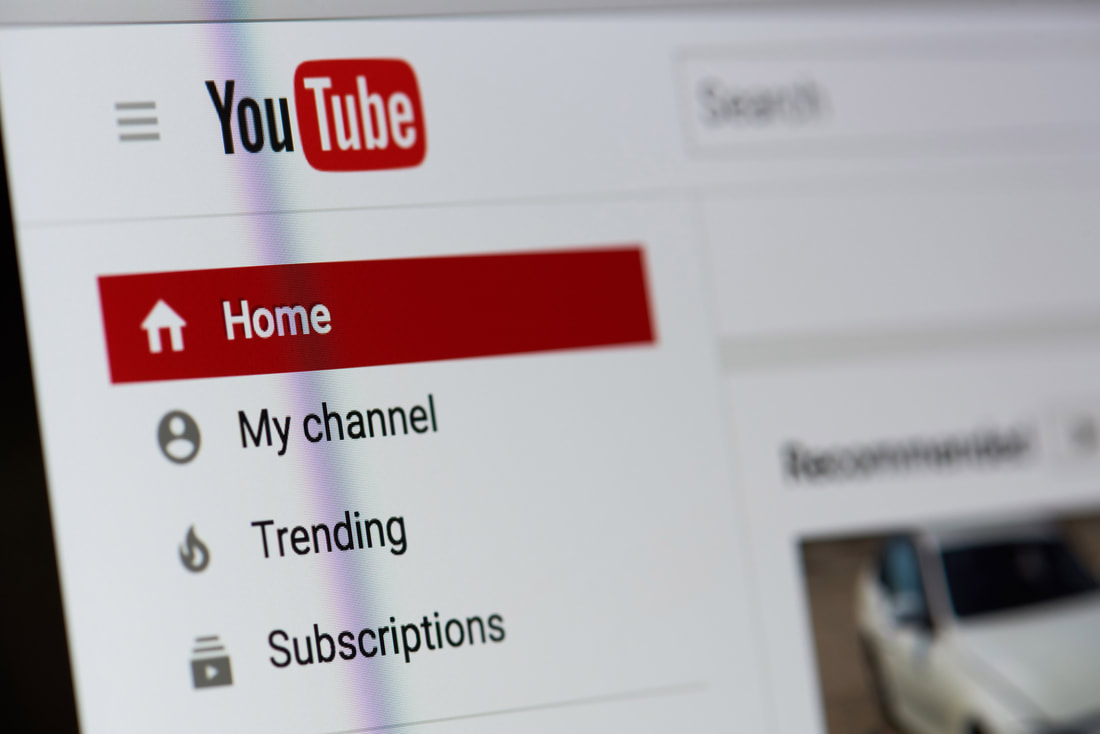

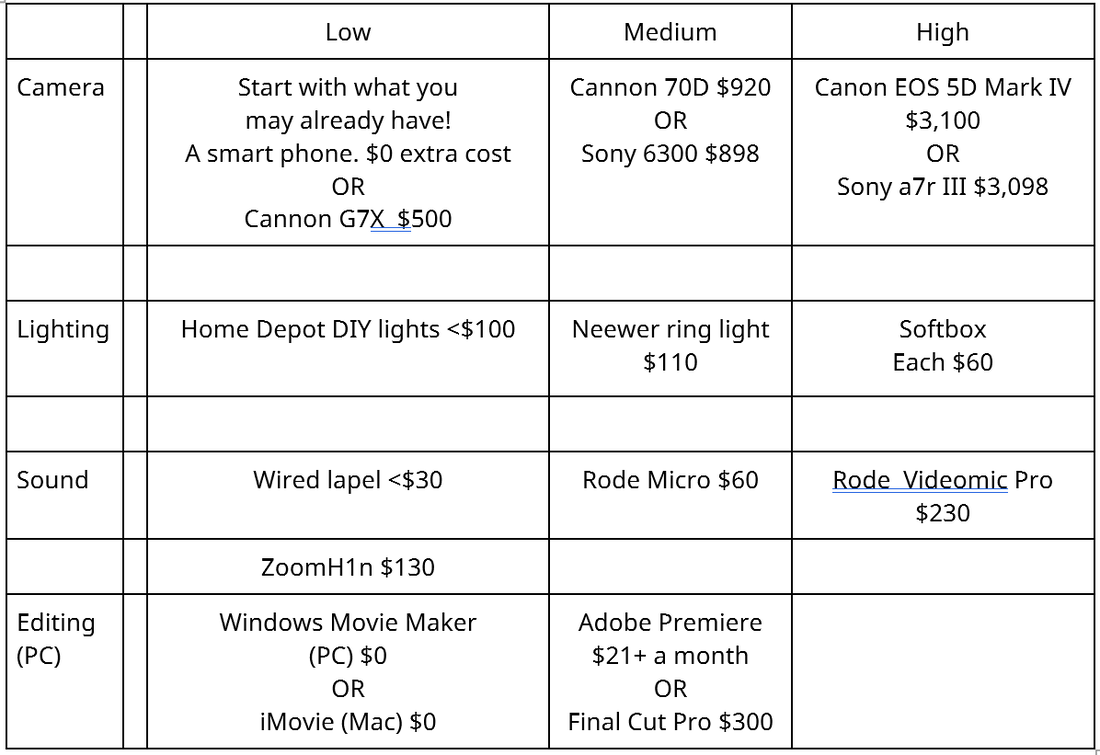
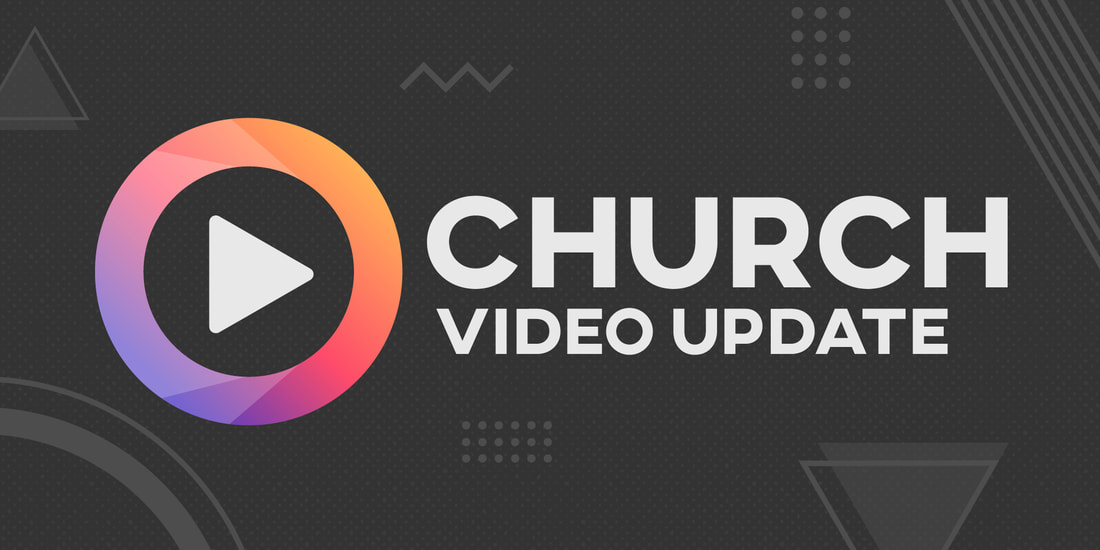


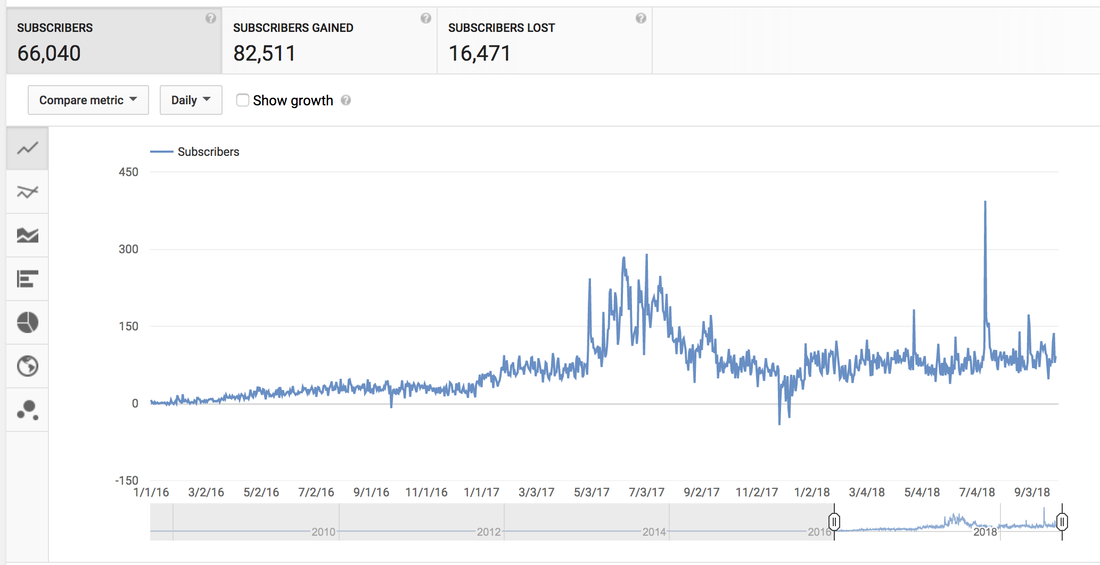
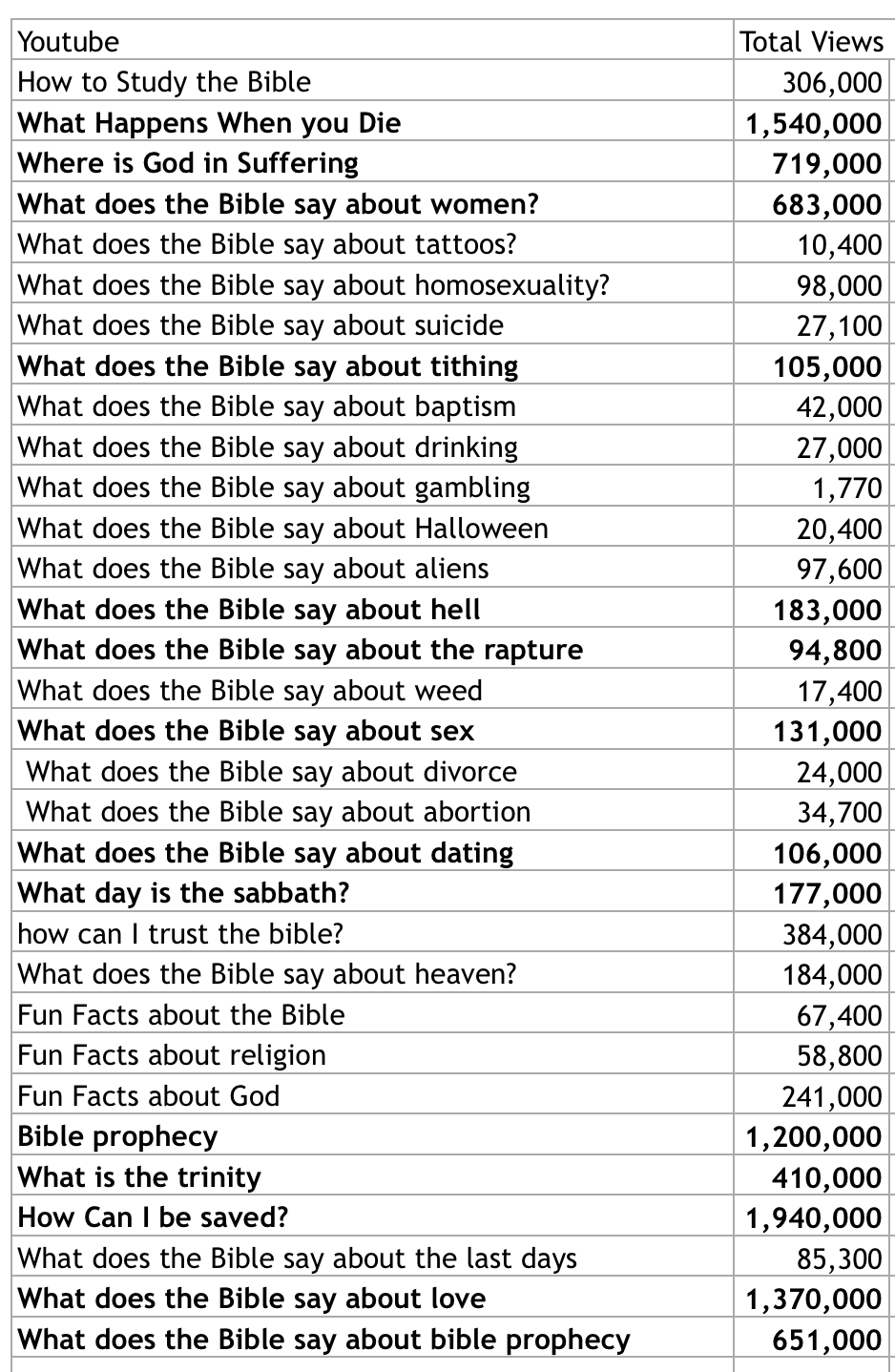
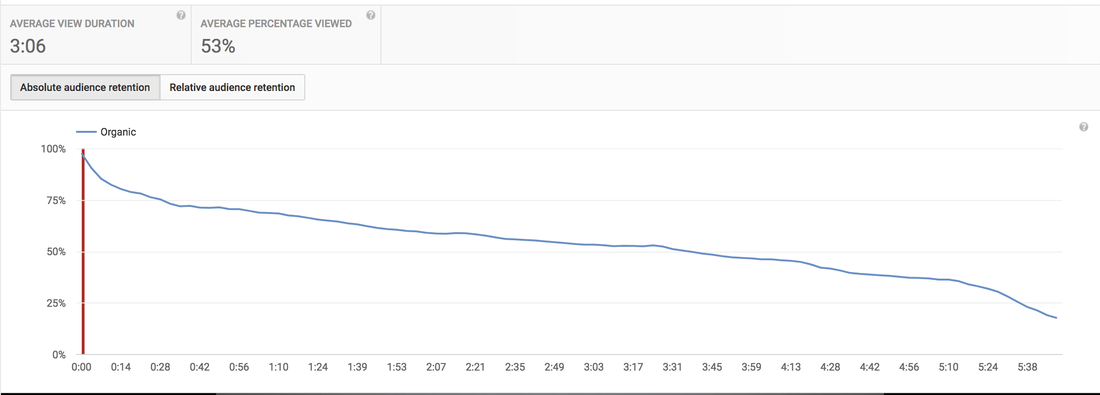
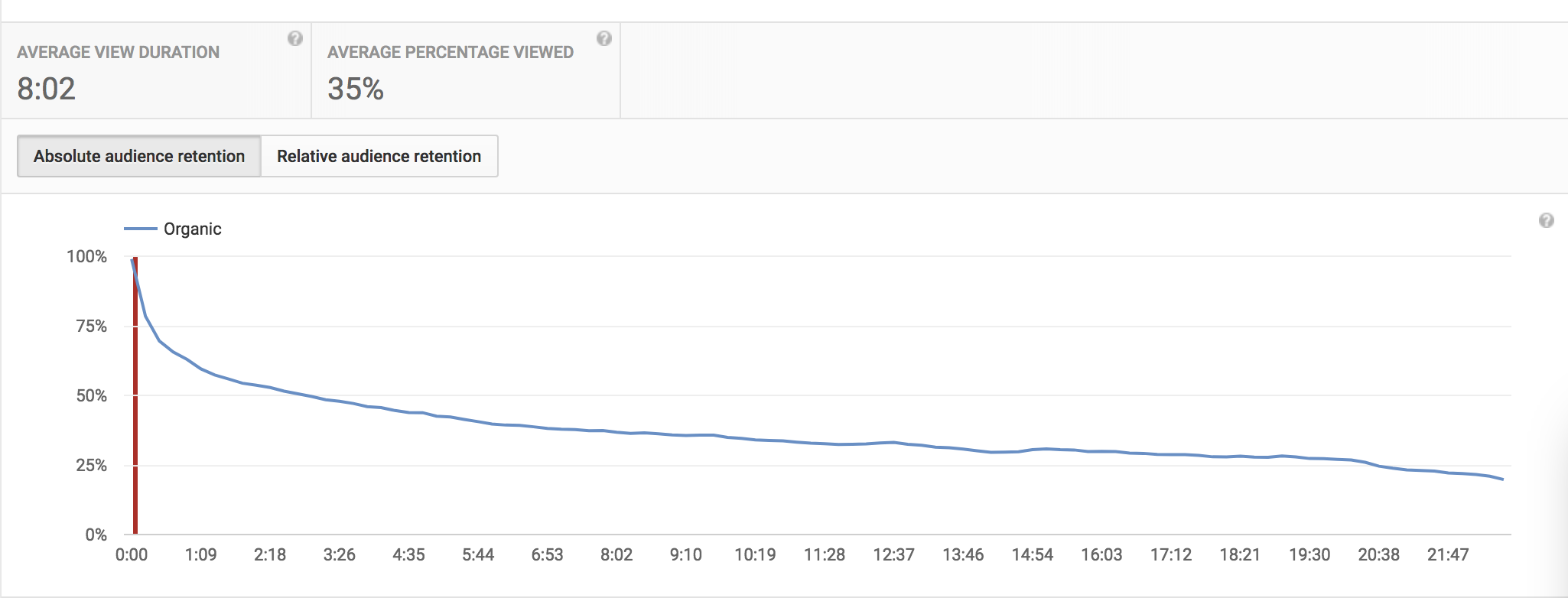
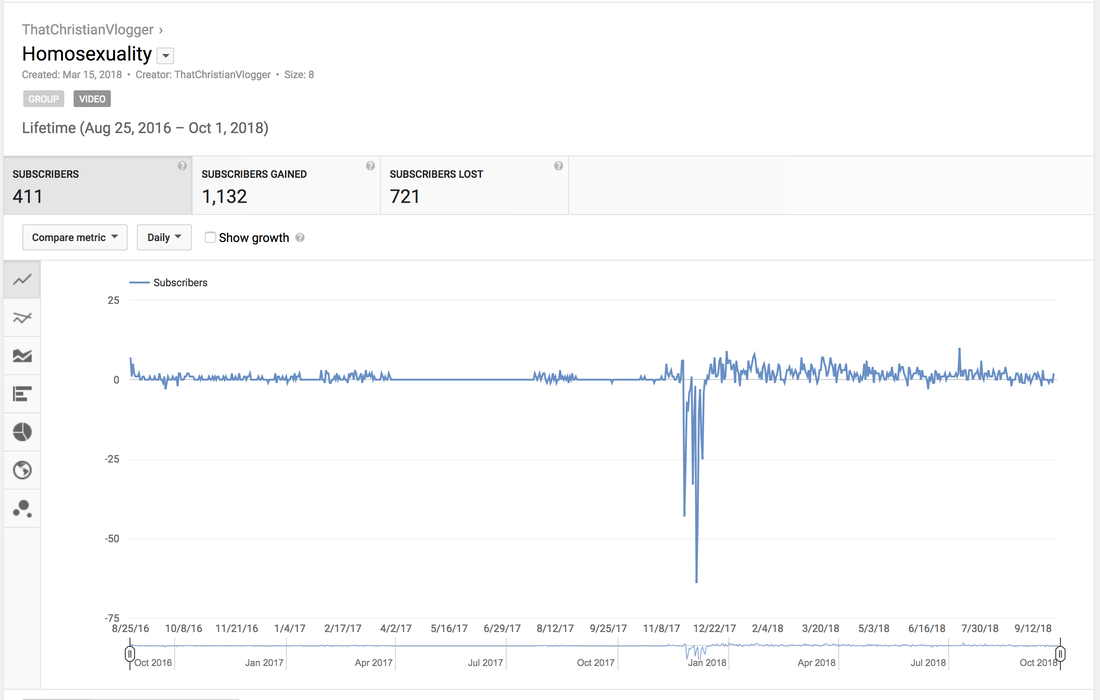

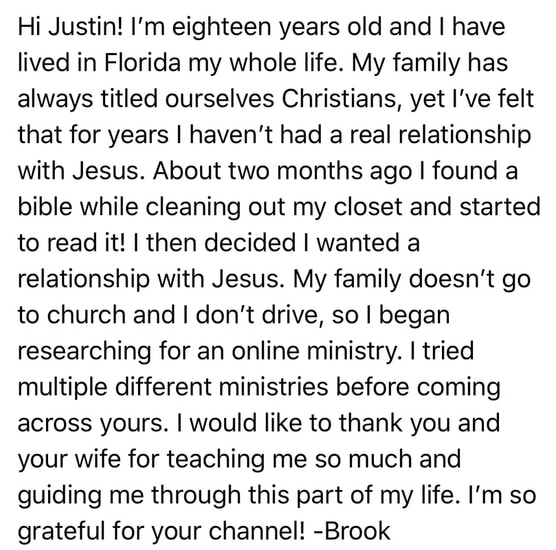


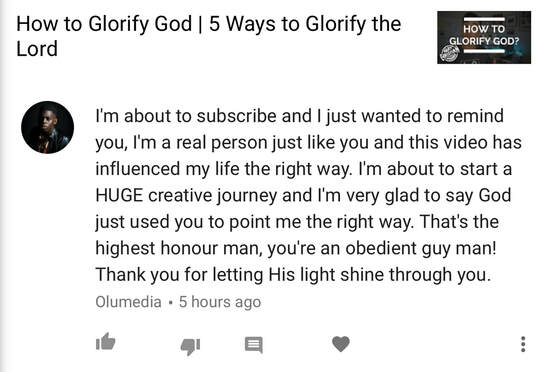

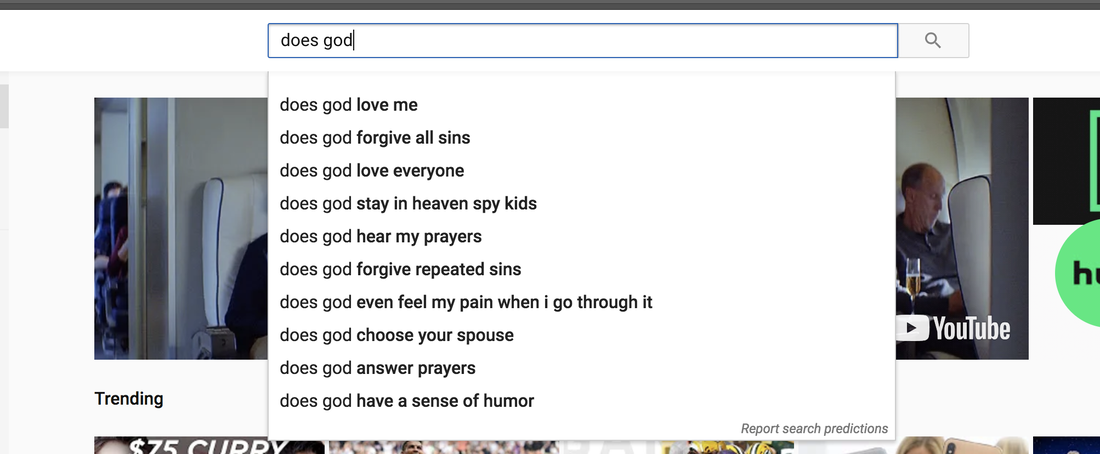
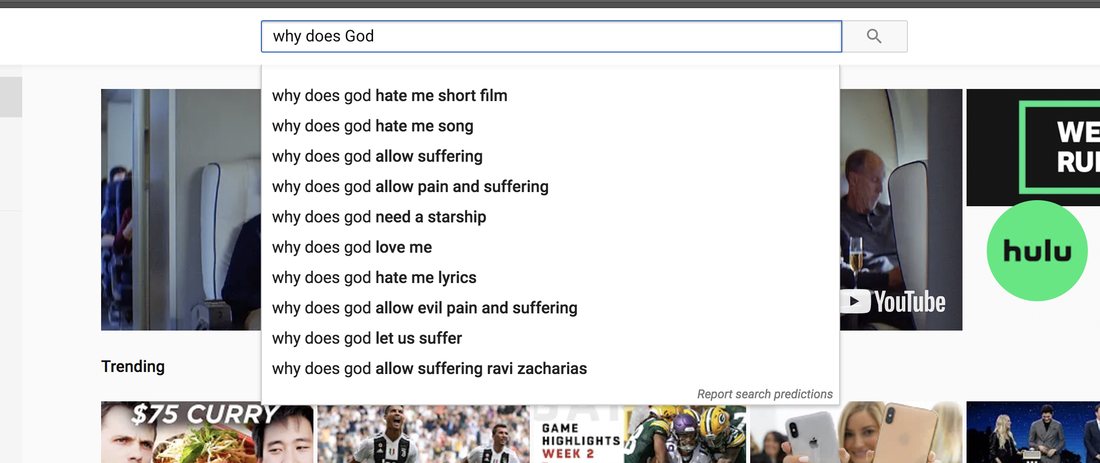
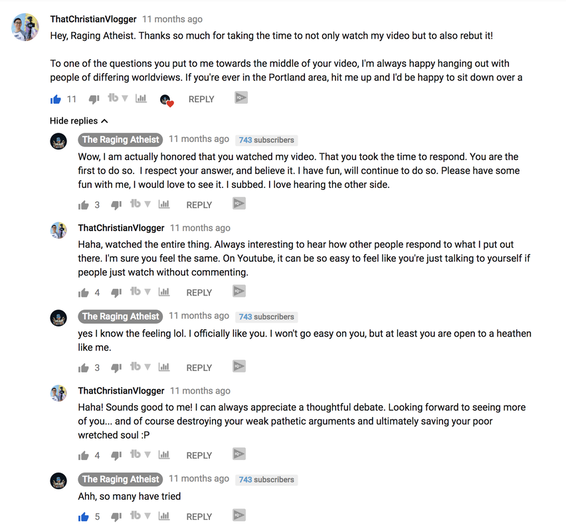
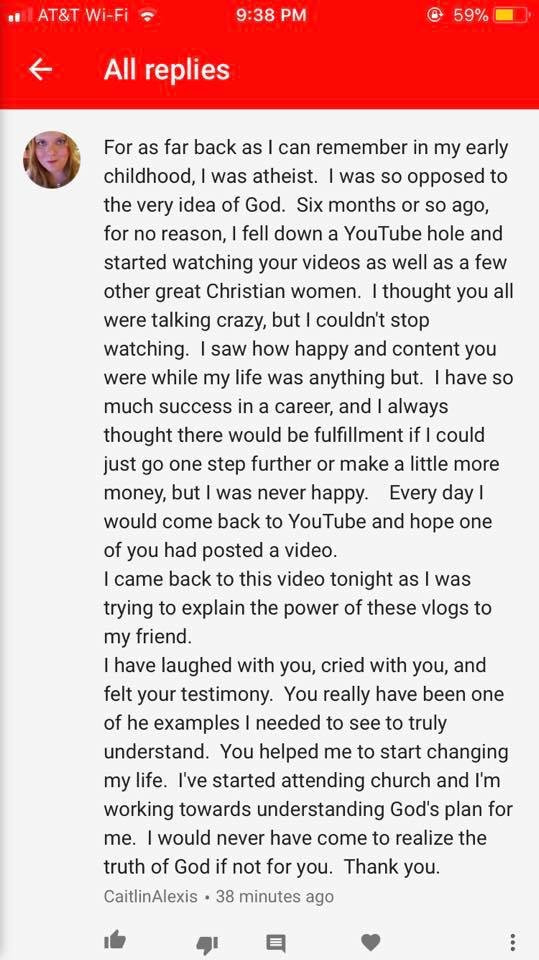


 RSS Feed
RSS Feed